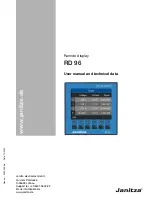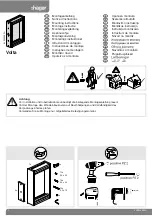
PULSERPLUS PRO™ HIGH RESISTANCE GROUNDING SYSTEM
INSTALLATION, OPERATION AND MAINTENANCE INSTRUCTIONS
4750 Olympic Blvd. • Erlanger, KY 41018 • USA
Phone: 800-537-6144 / 859-283-0778 • Fax: 859-283-2978
www.postglover.com
Serving the Electrical Industry Since 1892
PGR Document #HG111-06
© 2006 Post Glover Resistors, Inc.
PULSERPLUS PRO™ HIGH RESISTANCE GROUNDING SYSTEM
INSTALLATION, OPERATION AND MAINTENANCE INSTRUCTIONS
4750 Olympic Blvd. • Erlanger, KY 41018 • USA
Phone: 800-537-6144 / 859-283-0778 • Fax: 859-283-2978
www.postglover.com
Serving the Electrical Industry Since 1892
© 2006 Post Glover Resistors, Inc.
3
Section 1 – Equipment Overview
Post Glover High Resistance Grounding Equipment coordinates the use of resistors and control devices, creating
a high-resistance ground for a power system. The grounding equipment has these features:
Overvoltage Reduction:
Reduces the transient over voltages that can occur during arcing-type faults.
Fault Detection:
Provides an indication when the first ground fault occurs. An adjustable time delay is included to eliminate
nuisance faults.
Fault Tracking:
Helps to locate the fault by producing a tracer signal of current pulses easily distinguishable from background
noise.
Operation Protection:
Enables the system to continue operation with a single line-to-ground fault present.
Harmonic Detection:
Provides an indication when third harmonics exceed a preset value. An adjustable time delay is included to
eliminate nuisance faults.
Arc Flash/Blast Reduction:
Eliminates hazardous energy during ground faults, which are present in 90% of all electrical faults.
This instruction booklet is intended as a general guidance tool for personnel installing Post Glover High
Resistance Grounding Systems. However, each unit is designed for a specific application/installation. The
detailed drawings provided with each unit supersede the general information provided in this booklet.
NOTE:
Any work performed on this unit should be done by qualified persons and must be done in compliance
with national, regional, local and site-specific safety procedures.




































